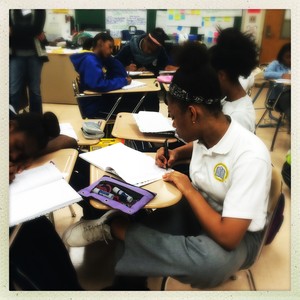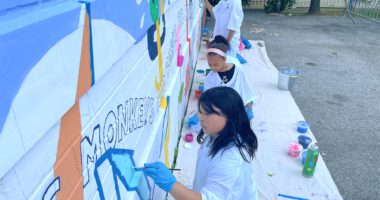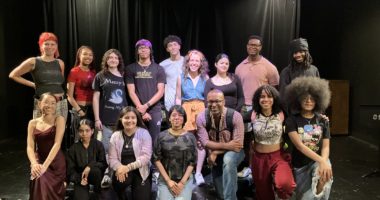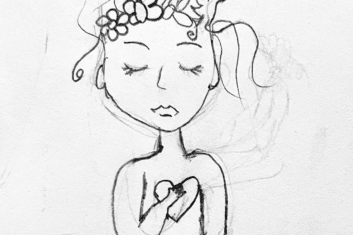“The only thing we have to fear is fear itself,” said FDR, but that’s not how I felt as I got ready for my first Teaching Artist Training & Internship Program (TATIP) observation class. I was anxious about the trip from my home in Staten Island to The Young Women’s Leadership School (TWYLS-Q) in Jamaica, Queens. Queens is the borough I’m least familiar with. I wondered how long it would take to get there and, when I did, whether I could find the school. I would be observing ninth-grade students. I haven’t worked much with high school classes. I worried about whether the students would be comfortable with me — I use a wheelchair to get around. When I meet new people, my chair always feels like the elephant in the room.
I took a deep breath and headed out. Traffic was surprisingly light, and the trip took just under an hour. The school was right where the GPS said it would be. I even found the wheelchair entrance easily. I went into the classroom and waited for the students to arrive.
The bell rang. Soon, a small stampede of girls of all shades, shapes, and sizes rushed into the classroom. I smiled and said hello to them. Most of them smiled and said hello back. What a relief!
Community-Word Project’s Katie Rainey is the Teaching Artist for this class. I noticed from the beginning that she had an easy rapport with the students. Her opening activity was a free write, imbedded with a subtle lesson on writing mechanics. Students could write about whatever they wanted. However, they must express themselves in one giant run-on sentence. No punctuation allowed. If they felt a stopping place, they would use a conjunction to join the narrative together and keep going. Seemed like a great way to get students to look at their writing through an “opposite” lens. With no protest, and very little talking, the girls opened their journals and wrote furiously. When time was up, it took little coaxing for several students to share their work.
Katie then gave students another writing prompt: “write about a time you felt judged.” Again, heads went down immediately, and serious work began. This topic was more sensitive. I wondered if students would be so quick to share.
They were. One girl raised her hand.
“Everybody calls me skinny,” she said. “I don’t like that.”
The next student said, “They make fun of me for being tall. I can’t help how tall I am.”
A third young woman volunteered. “I colored my hair red, and people are always saying things about it. And they say where are your boobs?”
“What was that?” several girls asked.
“They say WHERE ARE YOUR BOOBS? Like I don’t have any.”
I marveled at the safe space Katie had created for these young women to express themselves.

Katie spent the final minutes of the class having students read an award-winning essay, Hijabi in Plain Sight by R. Aicha, a Muslim high school student who wears a hijab.
Since several students in Katie’s class wear hijabs, this seemed to be a particularly clever choice. The writer did a skillful job of explaining that people who wear hijabs are just people, like people with red hair, or tall people, or skinny people. Or people who use wheelchairs.
I learned more than I bargained for in my first observation. I’m not the only one who carries an elephant with me into every room. While not all differences are as obvious as using a wheelchair or wearing a hijab, what’s important is having a safe place to write and talk about whatever makes us feel self-conscious or fearful. It shows us that, in spite of our differences, we all have a great deal in common. When I go back to class next week, the only thing I will have to fear is fear itself.
-Carolyn Clark, TATIP Trainee, Musician





